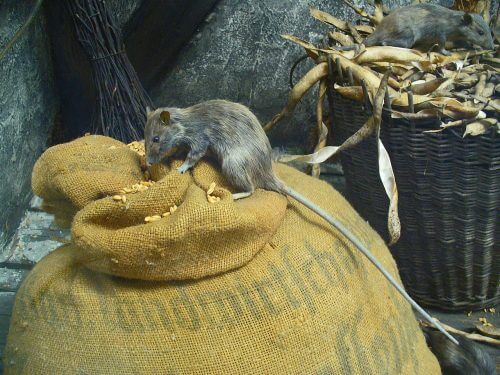Rats activate their whiskers differently in different contexts. The action of the whiskers makes it possible to predict the movements of the rat

Where are the senses directed? In a classic experiment from the 60s, Alfred Yarbus showed subjects pictures and tracked their pupil movements. The Russian psychologist showed how the way we "sample" the world through the eyes changes according to the context: when he asked the age of the people photographed - the pupils moved between the eyes, lips and palms, and when he asked about their economic status - the gaze was directed to clothing and objects. Weizmann Institute of Science scientists Showed recently Because rats activate their whiskers in a similar way: the movements of the whiskers change according to the context and even make it possible to predict the rat's movements.
As often happens in science, the starting point for the research was completely different: Dr. Avner Welch, who at the time was a post-doctoral researcher in the laboratory of Prof. Ehud Ahisher In the neurobiology department, he developed a system that activates the whiskers of anesthetized rats. His goal was to imitate the way rats move their whiskers when they are awake and to measure how these movements are coded in the brain. As the research progressed, Dr. Welch realized that he did not have enough information about natural mustache movement. "I started collecting data from all kinds of places, including data that was 'lying' in our laboratory without use," says Dr. Velach. "From looking at the data, the first thing that stood out is that there are very large differences in the way the rat moves its whiskers in different contexts - for example, if the rat is running freely or, as is the case in many experiments, if its head or body is fixed or if its whiskers are thinned, so It will be easier to track his movement."
Dr. Welch, together with Dr. Tess Baker Orem and Dr. David Deutsch who were research students in the laboratory at the time, began to put order in the raw data and tried to map the movements of the mustache according to a series of parameters, including the direction of the movement of the bristles, the range of movement, the speed and vibration. The analysis of the data revealed that when the rats are free to move as they wish, the movement of the whiskers has fairly constant characteristics: the range of movement is relatively small and a special emphasis on forward movement is evident: 70% of the time was devoted to slow and exploratory forward movement, while only 30% to fast backward movement; Similarly, 70% of the whisker vibrations occurred when the bristles were moving forward and only 30% during their backward movement.
It is easy to assume that this action of the whiskers reflects the rat's forward movement and its expectation of encountering objects with the direction of progress, but the researchers noticed something else: the timing of the vibrations allowed them to predict the rat's behavior. Mustache vibrations (pumps), a kind of small disturbances in the smooth and cyclical movement of the bristles, are a particularly significant variable thatstudied extensively in his laboratory of Prof. Ahisher. "From the work of Dr. Deutsch, Dr. Baker Orem and Dr. Dana Sherman (who was also a research student in the lab at the time), it became clear that rats vibrate their whiskers when they examine objects," says Dr. Welch. "However, until now it was thought that when the mustache vibrates in the open air, without any bone contact, it is a mechanism for synchronizing or correcting movement. We saw that if you look at the movement of the bristles in high resolution, you can actually identify where the rat's spatial attention is directed and predict where it is going to move forward or turn its head."
When the rats were not moving - either by choice or as a result of the head being fixed - their use of the whiskers changed completely. In these situations, the range of movement was much greater and the time spent moving forward and backward was more or less equal - and so was the number of vibrations of the whisker in the forward and backward movement. The researchers hypothesized that the rats expand their sensing action over the entire possible range to compensate for the loss of degree of freedom caused by the fixation of the head. "These findings offer a solution to an open puzzle in the research literature," says Dr. Welch. "In various experiments, in which we observed the brain activity of rats while using a whisker, it was reported that many cells encode backward movement; These findings have so far remained without a satisfactory explanation. Our analysis shows that the reason for this may simply be due to the conditions of the experiment: by fixing their heads, the researchers actually caused the rats to sample the world differently."
Similar to Yarbus's experiment, and unusually in brain research today, the current study is based on behavioral observations only, without any measurement of brain activity. The two experiments demonstrate the importance of the perception of the sensory-motor system as a closed circuit that does not have a beginning, middle and end - that is, not a one-way perception of sensory stimulation that leads to a motor response, but a feedback loop in which the very perception of reality changes according to the conditions, circumstances and needs at that moment . Says Dr. Welch: "One of the meanings of this basic characteristic of the system is that we must remember, as researchers, that the way we perform experiments permeates the animal down to the level of the single cell."
More of the topic in Hayadan:
